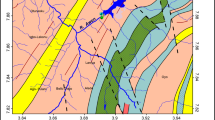Abstract
Monitoring water quality is very crucial for sustainability and availability of clean water on earth. Electrolytic conductivity is one of the important water quality parameters to be monitored according to American Environmental Protection Agency, World Health Organization and Ministry of Environment and Forests Republic of Indonesia. Testing laboratories have a significant role in producing the accurate measurement related to the water quality parameters including electrolytic conductivity. Therefore, participating in a proficiency testing (PT) is mandatory, especially for the accredited testing laboratories, to demonstrate the competency of laboratories in doing the measurement. As PT provider, Chemical Metrology Laboratory held annual PT round since 2013. In 2018 PT round, the Chemical Metrology Laboratory provided a PT to measure the electrolytic conductivity of synthetic wastewater. Before preparing the PT test samples, the feasibility study was conducted to determine the best formulation of synthetic wastewater. During this study, two different formulations were compared in terms of simplicity formulation, electrolytic conductivity value, total dissolved solid/electrolytic conductivity conversion value, homogeneity and stability of the synthetic wastewater. The results show that both candidates are sufficient to be used as PT test samples; however, only one candidate was selected due to its ease and simplicity formulation.
Similar content being viewed by others
References
EPA (2001) Parameters of water quality interpretation and standards. Environmental Protection Agency, Wexford
WHO (2017) Water safety and quality. http://www.who.int/water_sanitation_health/water-quality/en/. Accessed 12 Apr 2018
WHO (1997) Guidelines for drinking-water quality. WHO Library Cataloguing, Geneva
WHO (2008) Guidelines for drinking-water quality: incorporating the first and second addenda, vol 1, 3rd edn. WHO Press, Genewa
Indonesia MLHR (2014) Peraturan Menteri Lingkungan Hidup Republik Indonesia No 5 tahun 2014. Kementerian Hukum dan Hak Asasi Manusia Republik Indonesia, Jakarta
Máriássy M, Pratt KW, Spitzer P (2009) Major applications of electrochemical techniques at national metrology institutes. Metrologia 46:199–213
Orrù E (2014) Traceability of electrolytic conductivity measurements for ultra pure water. Politecnico Di Torino, Giugno
Ali NS, Mo K, Kim M (2012) A case study on the relationship between conductivity and dissolved solids to evaluate the potential for reuse of reclaimed industrial wastewater. KSCE J Civ Eng 16:708–713
Bauder TA, Waskom RM, Sutherland PL, Davis JG (2011) Irrigation water quality criteria. Colorado State University 0.506
Walton NRG (1989) Electrical conductivity and total dissolved solids—what is their precise relationship? Desalination 72:275–292
Hubert E, Wolkersdorfer C (2015) Establishing a conversion factor between electrical conductivity and total dissolved solids in South African mine waters. Afr J Online 41:490–500
McNeil VH, Cox ME (2000) Relationship between conductivity and analysed composition in a large set of natural surface-water samples, Queensland, Australia. Environ Geol 39:1325–1333
Mortula M, Shabani S (2012) Removal of TDS and BOD from synthetic industrial wastewater via adsorption. In: 2012 International conference on environmental, biomedical and biotechnology. IACSIT Press, Singapore
Breuel U, Werner B, Jehnert D (2009) Metrology in chemistry for pH and electrolytic conductivity traceability dissemination. Chimia 63:643–646
Kim JH (ed) (2007) Study on the characteristics of municipal and industrial wastewater treatment plant effluent for reuse as industrial water. In: Korean water and environment society conference. KINTEX, Korea
Lim S, Kim S, Yeon K-M, Sang B-I, Jongsik C, Lee C-H (2012) Correlation between microbial community structure and biofouling in a laboratory scale membrane bioreactor with synthetic wastewater. Desalination 287:209–215
Tsang YF, Sin SN, Chua H (2008) Nocardia foaming control in activated sludge process treating domestic wastewater. Bioresour Technol 99:3381–3388
Nopens I, Capalozza C, Vanrolleghem PA (2001) Stability analysis of a synthetic municipal wastewater. Department of Applied Mathematics BaPC, Universiteit Gent, Gent
Brinkmann F, Dam NE, Deák E, Durbiano F, Ferrara E, Fükö J, Jensen HD, Máriássy M, Shreiner RH, Spitzer P, Sudmeirer U, Surdu M, Vyskočil L (2003) Primary methods for the measurement of electrolytic conductivity. Accred Qual Assur 8:346–353
Krismastuti FSH, Sujarwo S, Hindayani A, Hamim N (2018) Competency evaluation on electrolytic conductivity measurement in Indonesia by an unofficial bilateral comparison between RCChem-LIPI and NIMT. Accred Qual Assur 24:119–125
Shreiner RH, Pratt KW (2004) Primary standards and standard reference materials for electrolytic conductivity. Natl Inst Stand Technol Spec Publ 260–142:1–31
Jameel RH, Wu YC, Pratt KW (2000) Primary standards and standard reference materials for electrolytic conductivity. US Government Printing Office, Washington
Acknowledgements
The author would like to thank Ms. Nurhani Aryana for her assistance in statistical calculation and fruitful discussion during this study.
Author information
Authors and Affiliations
Corresponding author
Additional information
Publisher's Note
Springer Nature remains neutral with regard to jurisdictional claims in published maps and institutional affiliations.
Rights and permissions
About this article
Cite this article
Krismastuti, F.S.H., Hamim, N. Designing a formulation of synthetic wastewater as proficiency testing sample: a feasibility study on a laboratory scale. Accred Qual Assur 24, 437–441 (2019). https://doi.org/10.1007/s00769-019-01399-3
Received:
Accepted:
Published:
Issue Date:
DOI: https://doi.org/10.1007/s00769-019-01399-3




